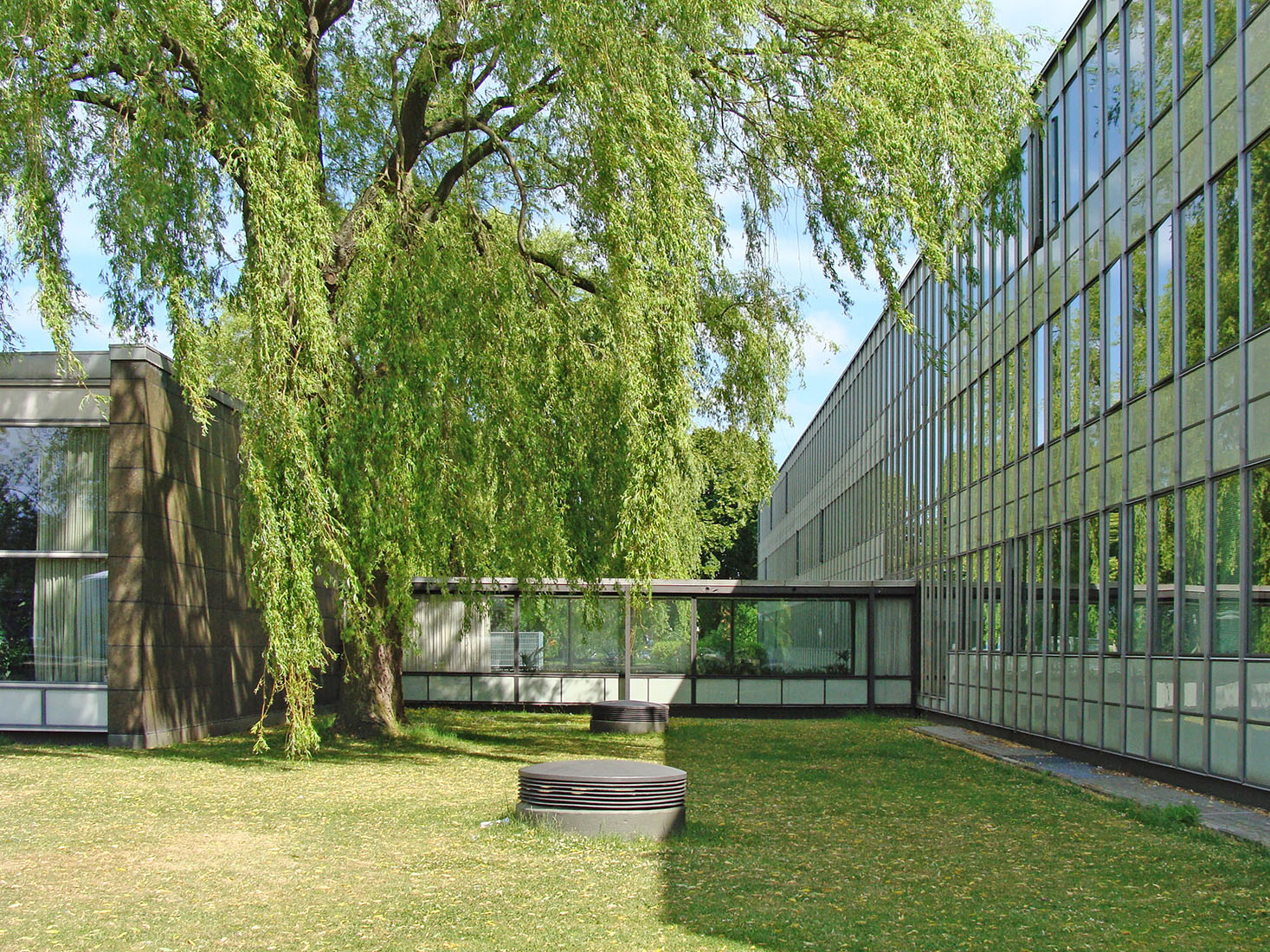 |
 |
 |
 |

Town Hall R°dovre
Parkvey 150, R°dovre, Copenhagen
1953 - 1956
At
the time Arne Jacobsen was designing his Town Hall in R°dovre, he was
very much interested in Saarinen's scheme for General Motos in Detroit.
As a consequence, he pursueda similar image in drawing up his scheme. The project basically consists of two volumes. A large horizontal volume
contains the municipal offices, while the council chamber is located in a separate pavillon-like building, accessed by a covered walkway on the ground floor.
The office wing has three floors above grade and a basement. The floor plan is articulated around a central corridor, flanked by concrite pillars,
which are at the same time the structural core. The two closed end fašades give rigidity to the structure. The precast floor slabs taper in section
from the central corridor to the fašades, like in the Jespersen office building, also by Arne Jacobsen. The floor slab has no other support than
the concrete pillars. The differential deformations in the fašades are balanced by the T-shaped metal angle sections that link the edges of the floor slabs
and serve as the vertical structure of the curtain wall of the two main fašades. This structural treatment gives the office building a free floor plan,
with an internal distribution based on prefabricated partitions 1 metre wide and 7.8 centimetres thick. The basement contains the rooms for staff,
such as storerooms, archives, toiltes and services. On the ground floor are to be found the main verstibule, administration offices, the finance department,
the social services, and government offices. The mayor's office is located on the first floor at the southern end of the building. The rest of the first floor is
occupied by the municipal auditor and other offices. The second and last floor accomodates the technical departments with the offices of the municipal architect
and engineer, the school administration, the cafeteria and the reception room. In the vestibule, next to the two elevators, is the principal staircase made of glass and metal.
This staircase is a beautiful work of cratsmen, hanging suspended from steel bars. On the exterior he glazed homogeneity of the mentioned curtain wall fašades
contrasts with the black S°lvag stone covering the closed walls. The relationship between glass and stone is turned by 90 degrees in the council pavillon.
As a consequence, he pursueda similar image in drawing up his scheme. The project basically consists of two volumes. A large horizontal volume
contains the municipal offices, while the council chamber is located in a separate pavillon-like building, accessed by a covered walkway on the ground floor.
The office wing has three floors above grade and a basement. The floor plan is articulated around a central corridor, flanked by concrite pillars,
which are at the same time the structural core. The two closed end fašades give rigidity to the structure. The precast floor slabs taper in section
from the central corridor to the fašades, like in the Jespersen office building, also by Arne Jacobsen. The floor slab has no other support than
the concrete pillars. The differential deformations in the fašades are balanced by the T-shaped metal angle sections that link the edges of the floor slabs
and serve as the vertical structure of the curtain wall of the two main fašades. This structural treatment gives the office building a free floor plan,
with an internal distribution based on prefabricated partitions 1 metre wide and 7.8 centimetres thick. The basement contains the rooms for staff,
such as storerooms, archives, toiltes and services. On the ground floor are to be found the main verstibule, administration offices, the finance department,
the social services, and government offices. The mayor's office is located on the first floor at the southern end of the building. The rest of the first floor is
occupied by the municipal auditor and other offices. The second and last floor accomodates the technical departments with the offices of the municipal architect
and engineer, the school administration, the cafeteria and the reception room. In the vestibule, next to the two elevators, is the principal staircase made of glass and metal.
This staircase is a beautiful work of cratsmen, hanging suspended from steel bars. On the exterior he glazed homogeneity of the mentioned curtain wall fašades
contrasts with the black S°lvag stone covering the closed walls. The relationship between glass and stone is turned by 90 degrees in the council pavillon.
